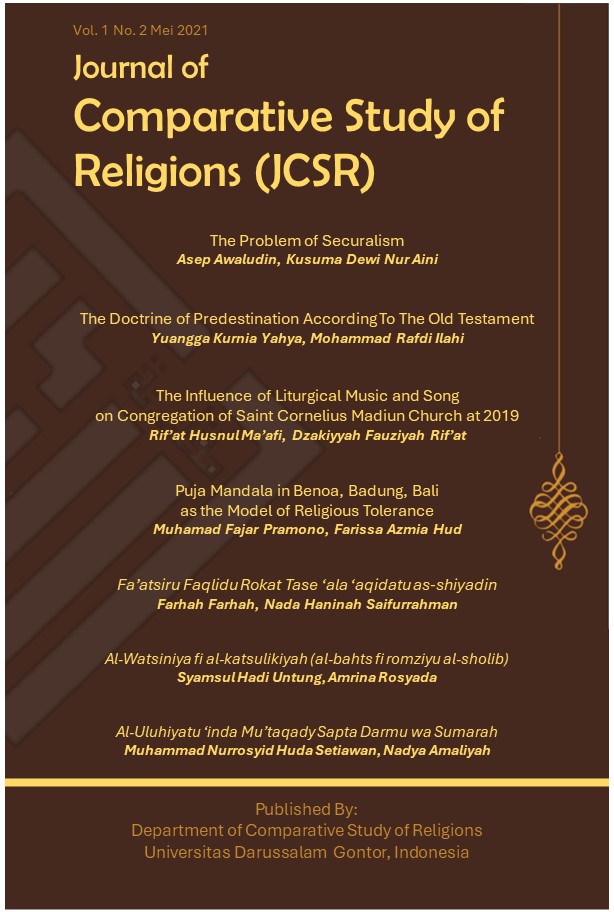Al-UlÅ«hiyatu ‘Inda Mu’taqadi Sapta Darma wa Sumarah (DirÄsah MuqÄranah)
DOI:
https://doi.org/10.21111/jcsr.v1i2.6386Abstract
As one of the Almighty creatures, humans will certainly never be separated fromthoughts about their God. Divinity is one of the sacred things which mediates howhumans appreciate worship to their Creator. Even though it is well known that God isOne with such worship, it turns out that there are several ethnic groups and cultureswhich collaborate this divine concept with their culture or what is called the Javanesetradition. Of the many Javanese traditions in Indonesia, the Sapta Darma and Sumarahtraditions are examples of how a Javanese culture has its own divine concept. Whichis still an interesting topic and object to study. There are several similarities betweenthe Sapta Darma an Sumarah traditions. As for what is the similarity between thesetwo schools is regarding the concept of prostration which becomes the intermediarybetween the adherents and his creator. Not only in terms of the similarities found,the author also found differences between these two schools, including regardinghow these two schools interpret divinity between perspectives, with the existence ofthe Pancasila of God for example, or with other things. Not only that, regarding thenature of God and God’s relationship with humans, in fact, these two schools haveunique definitions. Therefore, this paper aims to expand on this material in detail.Specifically, this paper aims to explore a little how the meaning of divinity accordingto the Javanese tradition in Indonesia. This study employed comparative analysis tocompare the divine concept according to the Sapta Darma and Sumarah schools. Andsupported by a theological approach that is really focused on the concept of divinityDownloads
Published
2021-04-01
How to Cite
Setiawan*, M. N. H., & Amaliyah*, N. (2021). Al-UlÅ«hiyatu ‘Inda Mu’taqadi Sapta Darma wa Sumarah (DirÄsah MuqÄranah) . Journal of Comparative Study of Religions, 1(2). https://doi.org/10.21111/jcsr.v1i2.6386
Issue
Section
Articles
License
Copyright (c) 2021 Journal of Comparative Study of Religions

This work is licensed under a Creative Commons Attribution-NonCommercial-ShareAlike 4.0 International License.
The author whose published manuscript approved the following provisions:Â
The right of publication of all material published in the journal / published in the JCSR is held by the editorial board with the knowledge of the author (moral rights remain the author of the script).
The formal legal provisions for access to digital articles of this electronic journal are subject to the terms of the Creative Commons Attribution-NonCommercial-ShareAlike 4.0 International License (CC BY-NC-SA 4.0), which means that JCSR reserves the right to save, transmit media or format, Database), maintain, and publish articles without requesting permission from the Author as long as it keeps the Author's name as the owner of Copyright.
Printed and electronic published manuscripts are open access for educational, research and library purposes. In addition to these objectives, the editorial board shall not be liable for violations of copyright law.




2.png)
